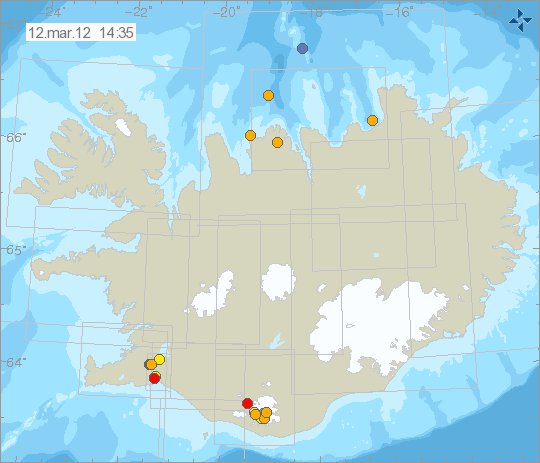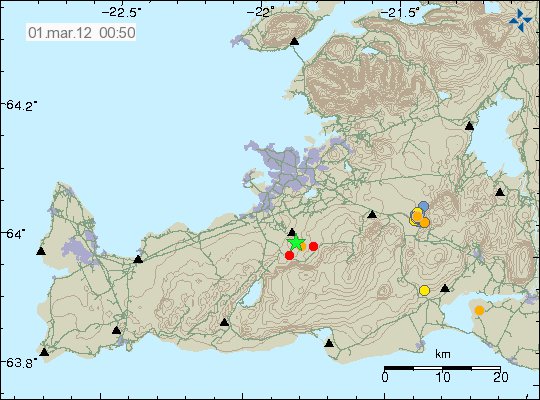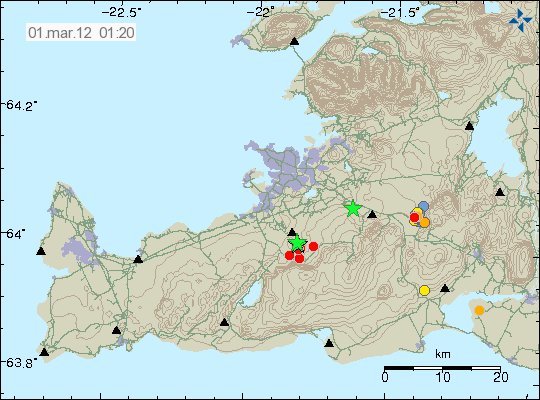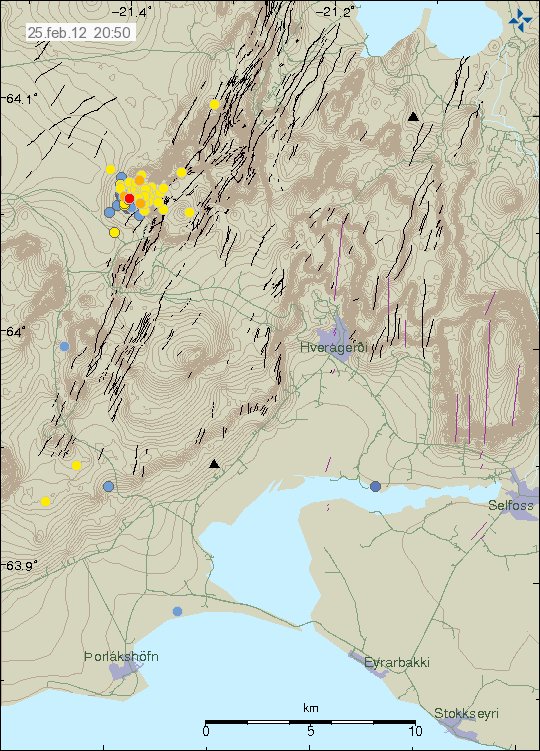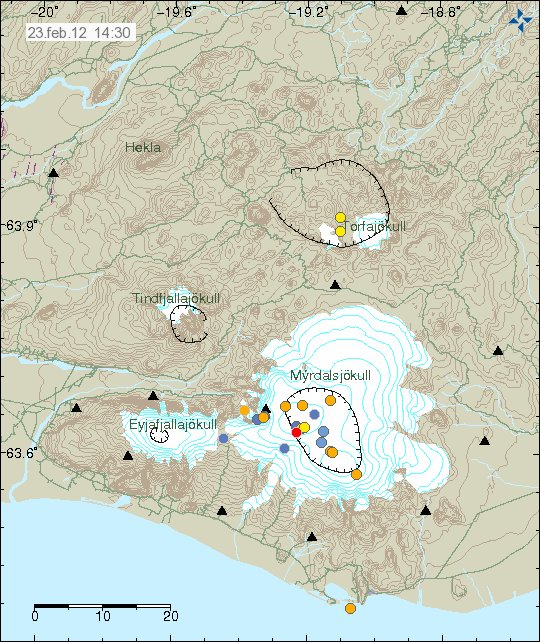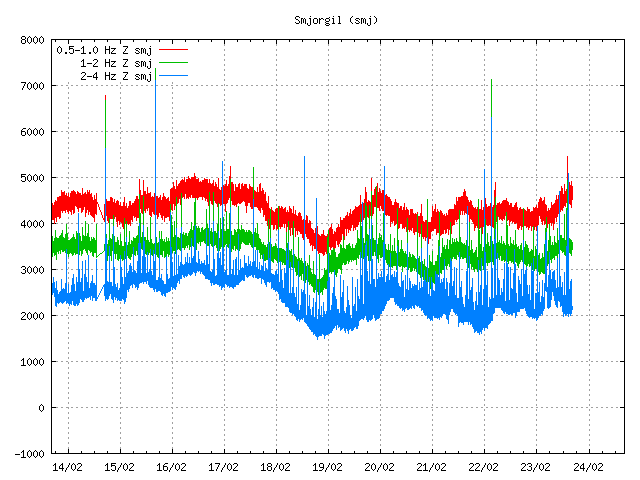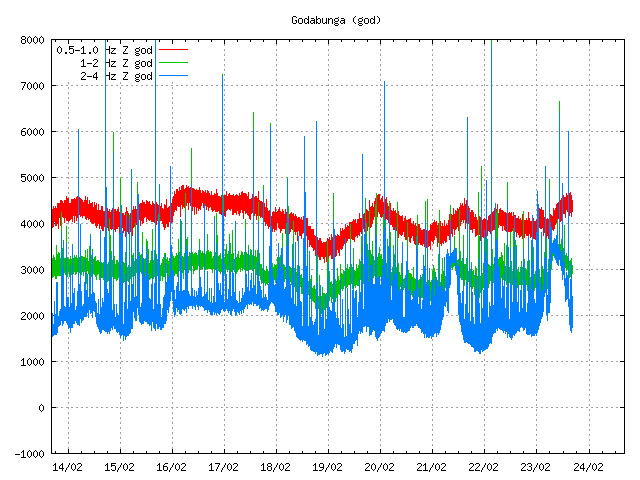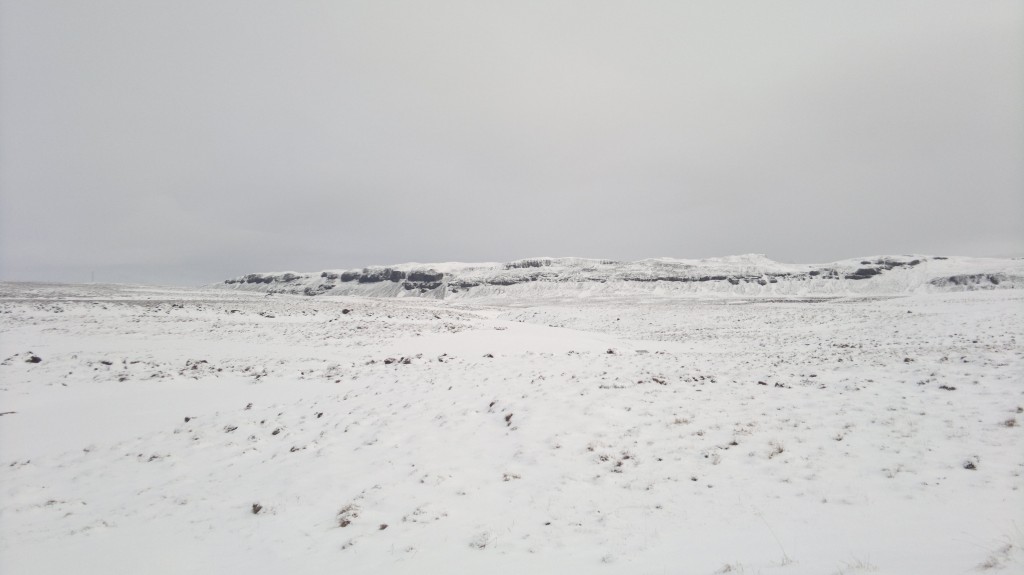Yesterday (14.03.2012) at 09:08 UTC there was an strong earthquake in Japan. The size of this earthquake was Mw6.9 and it had the depth of 10 km. Local tsunami warning was given out for the area closest to the epicenter of the earthquake. Aftershock activity has been ongoing after the main earthquake. The largest aftershock so far had the size Mw6.0. More details on the earthquake in Japan can be found here at EMSC web page.
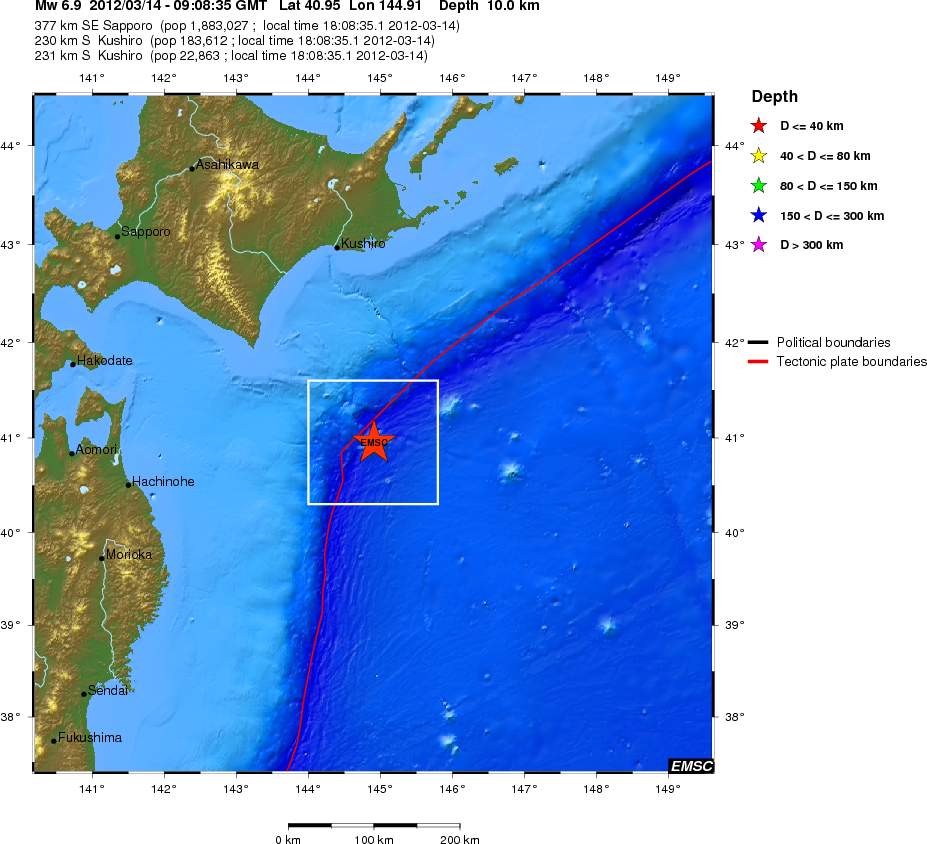
Regional view of the earthquake in Japan yesterday morning. Copyright of this image belongs to EMSC.
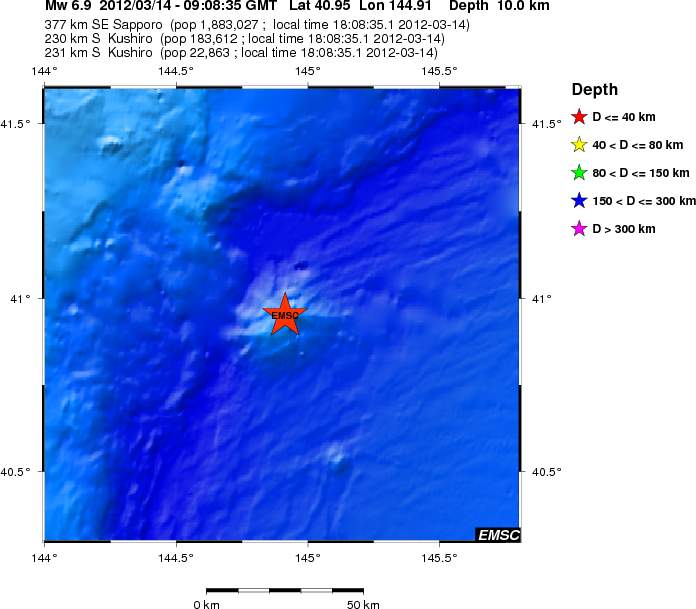
Local view of this earthquake. It appears to have been in an subduction mountain, or close to it. Copyright of this image belongs to EMSC.
Iceland
Currently there is an earthquake swarm ongoing on the Reykjanes Ridge off the coast of Iceland. So far the strongest earthquake has reached the size of ML2.7. The depth is about 7 – 16 km. There is an slight chance that his might be an dike intrusion taking place on the Reykjanes Ridge. But this also might just be normal fault movement in the area. For the moment. There is no way to know for sure exactly why this earthquake swarm is taking place.
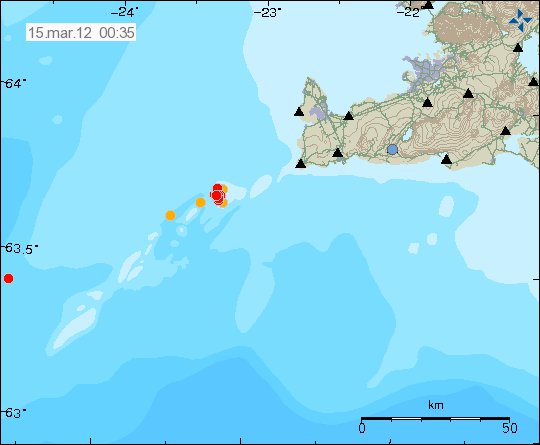
Reykjanes Ridge earthquake swarm as it is at 00:35 UTC. Copyright of this image belongs to Iceland Met Office.
South Norway
An minor earthquake took place in south Norway at 19:22 UTC. The size of this earthquake was ML3.5 according to EMSC. With the depth of 10 km. This earthquake was clearly felt in Norway according to EMSC and news reports of this earthquake. More details on this earthquake can be found here, on EMSC web page.
The regional view of the earthquake in south Norway . Copyright of this image belongs to EMSC.
. Copyright of this image belongs to EMSC.

Local view of the earthquake. It can clearly be seen here how close it was to several towns in south Norway. Copyright of this image belongs to EMSC.
This earthquake was clearly felt in Norway due the old crust that it took place it. But older crust conducts earthquakes better then new crust. Like the one that can be found in Iceland. That is due to lack of faults in it and the fact it is more dense with sediments then new crust. Earthquake in this area should be expected every 5 to 20 years or so. As there are old fault lines in this area, they sometimes break and create a earthquake.
Norwegian news about this earthquake.
Kanskje noen glass har falt ned fra bordet
Jordskjelv i Rogaland i kveld
New Britain region
Today at 21:13 UTC there was an Mw6.4 earthquake in New Britain region. The depth of this earthquake was 80 km according to EMSC. I do not know if this earthquake was felt or not. It at least has not been reported yet.
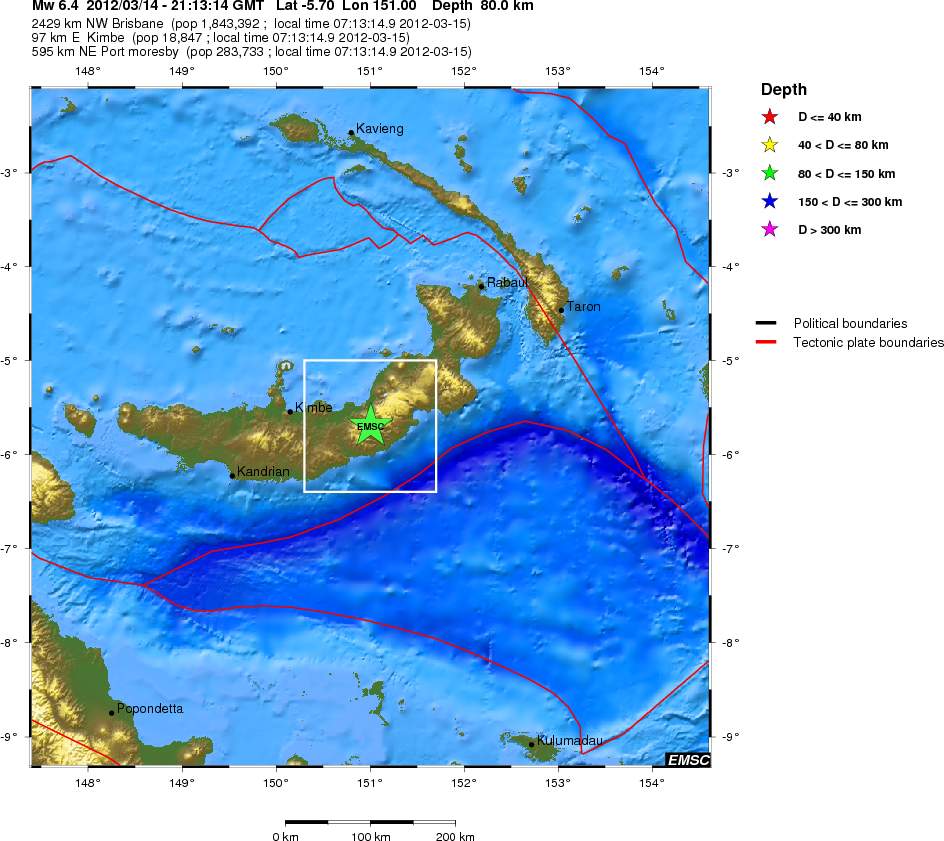
Regional view of the earthquake from EMSC. Copyright of this image belongs to EMSC.
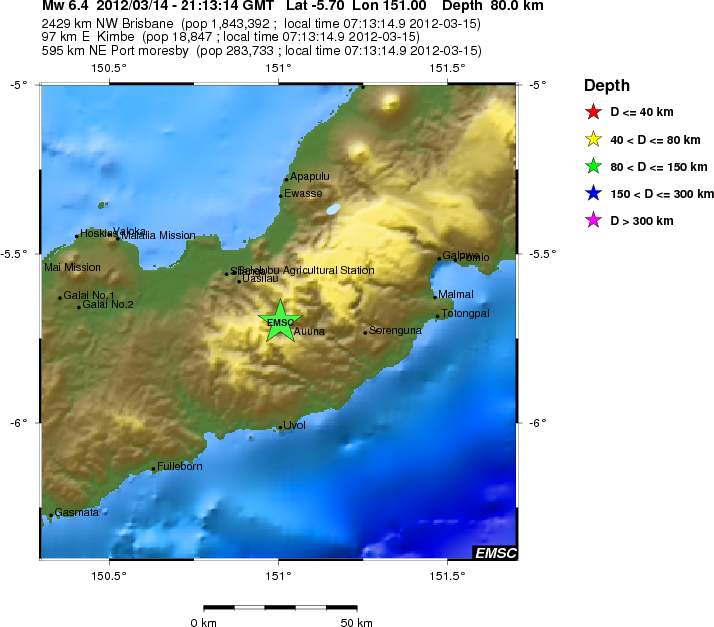
Local view of the earthquake from ESMC. Copyright of this image belongs to EMSC.
More information about this earthquake can be found here, on EMSC web page.
Other
I am sorry for late post. I was flying back to Iceland today. It took awhile. I also had to do other things this evening before I could write about the most recent activity yesterday. This is going also going to happen later when I move back to Denmark. But I am going to post more details on that later.
Blog post updated at 12:11 UTC on 15.03.2012. Location of the earthquake in Norway was fixed.








